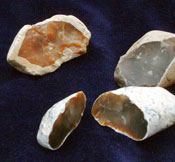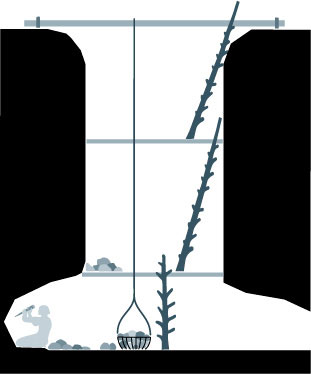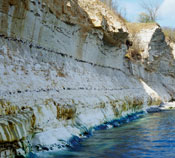Flint mining – a risky business
The production of the large, polished flint axes required flint of the highest quality. The exposed blocks of the flint stone on the surface were not enough to meet the demand. Actual mining techniques were therefore used where geological conditions were suitable, in “flint mines”. Such mines were located, for example, at Hov in northern Jutland, where archaeological excavations have revealed scores of pits. The Stone Age miners dug trial holes in the subsoil to find the flint. If they found it, they then widened the holes. In the upper strata where the risk of collapse was greatest they dug wide pits with sloping walls. When they reached further down, the chalk bedrock became more stable and proper shafts could be dug. The shafts were continued until flint was found, often at a depth of 5-6 metres. From there horizontal passages were dug out to the sides to collect as much flint as possible. In one of the biggest mines the Stone Age people followed the flint layers deep under the surface of the soil over an area of more than 60m2. Flint mining was a risky business – but the miners knew what they had to do!



